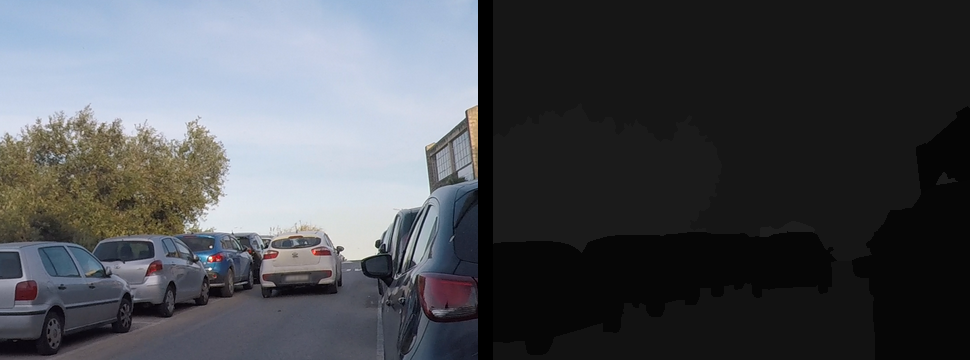Image segmentation is the process of classifying each object in an image. Image segmentation has many important applications, such as helping self-driving cars to analyse their surroundings, or to help medical professionals detect tumours in images.
The aim of this work is to compare established deep learning techniques used for image segmentation, as well as to analyse the performance of these techniques when Maltese road scenes are incorporated into the training and testing processes.
Local road scene footage has been recorded using a GoPro mounted on the rear-view mirror of a car driving through the streets of various Maltese towns. This footage has then been converted into images, taking 10 frames per second of footage. Approximately 70 images have been chosen to use for this task, which are then manually labelled for training.

Labelling is the process of marking each object in the image, so an image like the one shown on the left would be labelled as shown on the right. This allows the deep learning model to compare its own prediction with the correct one, and thus learning can happen.
These Maltese images and their labels are incorporated with foreign road scene images, and are used for training the AI. When a deep learning model is trained, it can then see a new image and try to segment it into objects as accurately as possible. The segmentation result for the above image would look like the below.

A number of different deep learning models are trained in this work, and the results from each model are compared to find the techniques for this task. The difference between models which are trained and only foreign images as opposed to models which are trained on foreign and Maltese images is also analysed.
Student: Luke Grixti
Course: B.Sc. IT (Hons.) Software Development
Supervisor: Prof. John Abela
